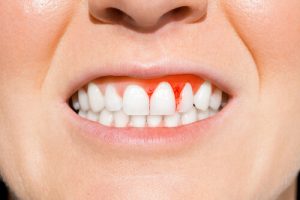How long for gums to reattach after deep cleaning? This common question arises after a thorough dental cleaning to treat gum disease and remove plaque buildup. The reattachment process is crucial for restoring gum health, but the timeline can vary. What factors influence this healing process, and what can you do to ensure the best outcome? Read on to uncover the answers and learn how to support your gums during recovery.
Introduction to Deep Cleaning and Gum Health
Deep cleaning is a crucial dental procedure for combating periodontal disease and maintaining the overall health of your gums and teeth. Here’s what you need to know:
Deep Cleaning Procedure
It often involves scaling and root planing, where the dentist cleans the roots below the gum line to remove plaque and tartar buildup on the root surfaces.
Local Anesthetic
They numb the mouth during the procedure, ensuring comfort for patients with sensitive gums and teeth.
Healing Process
After deep cleaning, the gums are reattached to the teeth’s clean surfaces. This healing can vary in time, influenced by the severity of the periodontal disease and the care taken after completing the procedure.
Care Instructions
Patients are advised to avoid hot foods, be cautious with their food choices, and adhere to a strict oral hygiene regimen to prevent infections and promote faster healing.
The Healing Process: What Happens After Deep Cleaning?
After undergoing a deep cleaning procedure, the healing process is crucial for restoring the health of your gums and preventing further periodontal complications. This process involves several key steps and careful management to ensure smooth and effective reattachment of the gums and overall oral health improvement.
- Initial Recovery: Immediately following the deep cleaning, which includes scaling and root planing, patients may experience tenderness and swelling around the treated areas. Local anesthetic used during the procedure will wear off, and the gums may feel numb for a few hours.
- Gum Reattachment: The gums heal and reattach to the cleaned root surfaces over the following weeks. This is a critical phase where the gums shrink and tighten around the teeth, reducing the depth of periodontal pockets.
- Careful Eating and Oral Hygiene: To prevent irritation, patients should avoid hot foods and make cautious food choices. Regular, gentle brushing and flossing are crucial, as is avoiding aggressive brushing around the sensitive gum line.
- Follow-Up Visits: Routine visits to the dentist are crucial for tracking the healing progress and confirming that the gums have been reattached correctly. These visits also help prevent infections and address concerns about soreness or inflammation.
- Long-Term Health Maintenance: After the initial healing, ongoing care and regular cleanings are vital to maintain gum health and prevent future buildup of plaque and tartar. This continuous care is crucial for preventing periodontitis and ensuring the longevity of the teeth and gums.
Factors Influencing Gum Reattachment Time
 The time it takes for gums to reattach after a deep cleaning can vary widely depending on several factors. Understanding these can help patients set realistic expectations and positively affect their healing process.
The time it takes for gums to reattach after a deep cleaning can vary widely depending on several factors. Understanding these can help patients set realistic expectations and positively affect their healing process.
Severity of Periodontal Disease: The extent of periodontal disease before deep cleaning surgery plays a significant role. More severe cases may take longer to heal due to deeper pockets and greater attachment loss.
Quality of Deep Cleaning: The thoroughness of the bone scaling and root planing procedure affects how quickly and effectively the gums can reattach. Skilled dental professionals who effectively remove all plaque and tartar from below the gum line can facilitate faster healing.
Patient’s Oral Hygiene Practices: Post-procedure care is critical. Patients who adhere strictly to their dentist’s recommendations for oral hygiene—such as regular brushing, flossing, and using antiseptic mouthwashes—are more likely to see quicker gum reattachment.
Overall Health and Lifestyle: General health factors, such as diabetes or smoking, can impede the healing process. Non-smokers and those without chronic health issues typically experience faster and more effective healing.
Nutrition and Diet: A healthy diet rich in vitamins and minerals supports gum regeneration. Foods that are high in Vitamin C and calcium, in particular, can aid in the recovery and health of gum tissue.
Frequency of Follow-Up Care: Regular visits to the dentist for check-ups and touch-up cleanings can prevent new tartar buildup and keep the treatment area clean, both of which are vital for encouraging gums to reattach as expected.
Typical Timeline for Gum Reattachment
 The timeline for gum reattachment after a deep cleaning varies based on several individual factors, but a general outline can help set expectations:
The timeline for gum reattachment after a deep cleaning varies based on several individual factors, but a general outline can help set expectations:
First Few Days: Immediately after the deep cleaning, gums and tongue will likely be tender and swollen. Patients may experience some bleeding and discomfort, which generally subsides within a few days.
One to Two Weeks: As the healing progresses, the swelling decreases, and the gums tighten around the teeth. Patients should observe improved gum colour and reduced bleeding when brushing or flossing.
Three to Four Weeks: Significant healing should have occurred by this point. Gums should have been reattached closer to the teeth, reducing the depth of any periodontal pockets. If bone loss is not extensive, patients often notice less mobility in previously loose teeth.
One to Three Months: During this period, the gums continue to heal and reattach more firmly. Regular dental check-ups are important to monitor progress and ensure no further complications arise.
Beyond Three Months: For some patients, especially those with severe periodontal disease, the complete reattachment of gums can take longer, sometimes up to six months. Continuous care and maintenance are crucial to support ongoing gum health and prevent the recurrence of the gum disease itself.
Tips for Promoting Faster Gum Healing
 Promoting faster gum healing after a deep cleaning is crucial for minimising discomfort and reducing the risk of further periodontal issues. Here are some effective tips to help enhance the healing process:
Promoting faster gum healing after a deep cleaning is crucial for minimising discomfort and reducing the risk of further periodontal issues. Here are some effective tips to help enhance the healing process:
- Follow the Dentist’s Instructions: Adhere closely to the care regimen prescribed by your dentist. This typically includes specific instructions on brushing, flossing, and using mouthwashes or other medications.
- Maintain Good Oral Hygiene: Brush gently but thoroughly at least 2 times daily using a soft toothbrush and fluoride toothpaste. Floss daily to get rid of plaque from areas your brush can’t reach.
- Use Therapeutic Mouthwash: Incorporating an antiseptic or antimicrobial mouthwash can assist in decreasing bacterial levels in the mouth., prevent infection, and support the healing of gum tissues.
- Avoid Certain Foods: Steer clear of hard, crunchy, or sticky foods that can irritate sensitive gums. Also, avoid hot foods and beverages that can exacerbate swelling.
- Stop Smoking: Smoking can significantly slow down the healing process by impairing blood flow to the gums. Smoking will improve oral health and help your gums heal faster.
- Stay Hydrated: Drinking enough water helps keep your mouth clean and remove food particles and bacteria.
- Eat a Balanced Diet: Consuming foods rich in vitamins A and C can bolster the immune system and aid in regenerating gum tissues. Include plenty of fruits, vegetables, and dairy products in your diet.
- Reduce Stress: High stress can slow down the healing process. Meditation, breathing exercises, and adequate rest can help manage stress.
- Attend Follow-Up Appointments: Regular visits to your dentist are crucial for assessing the healing process and receiving additional cleanings if necessary.
In conclusion, the healing time for gums to reattach after a deep cleaning varies, typically from a few weeks to a month. Proper oral hygiene and follow-up care ensure a healthy and speedy recovery. If you’ve recently undergone a deep cleaning, follow your dentist’s advice closely to support reattachment and improve your overall gum health.
If you have more questions about your gum health following a deep cleaning or need further dental advice, don’t hesitate to call us at (02) 8880 9257. Our team at Cattani Compressors Australia is here to help you achieve the best possible oral health. Reach out today to ensure your gums heal properly and swiftly!
References
What Happens After A Deep Cleaning?
https://www.colgate.com/en-us/oral-health/gum-disease/how-teeth-deep-cleaning-prevents-severe-gum-disease
Disadvantages and Advantages of Deep Cleaning Teeth
https://www.healthline.com/health/deep-cleaning-teeth
What Is the Cost of a Deep Teeth Cleaning?
https://www.webmd.com/oral-health/what-is-the-cost-deep-teeth-cleaning
Tooth Scaling & Root Planing: Deep-Cleaning Treatments
https://my.clevelandclinic.org/health/treatments/23983-tooth-scaling-and-root-planing
Deep Cleaning | UT Dentistry
https://www.uthscsa.edu/patient-care/dental/services/deep-cleaning



